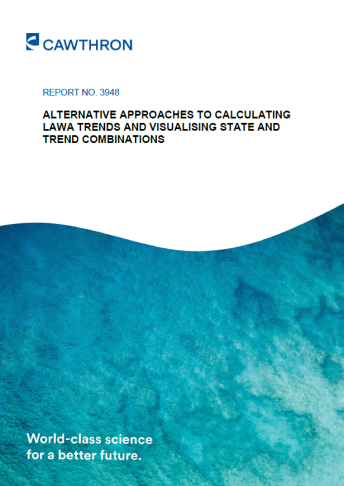The Cawthron Institute undertook a programme of work to assess and improve the representativeness, reliability, and interpretability of freshwater monitoring data collected around New Zealand. This included looking at alternative approaches to trend analysis and the integration of state and trend metrics, evaluating methods for reweighting water quality indicators to better reflect national river conditions and reviewing the adoption of quality control codes and metadata practices across regional council datasets.
Together, these reports provide insights and recommendations to strengthen the evidence base for freshwater management in Aotearoa New Zealand.
The Cawthron Institute undertook a programme of work to assess and improve the representativeness, reliability, and interpretability of freshwater monitoring data collected around New Zealand. This included looking at alternative approaches to trend analysis and the integration of state and trend metrics, evaluating methods for reweighting water quality indicators to better reflect national river conditions and reviewing the adoption of quality control codes and metadata practices across regional council datasets.
Together, these reports provide insights and recommendations to strengthen the evidence base for freshwater management in Aotearoa New Zealand.
This report evaluates the robustness of common methods used to calculate trends in water quality and ecological indicators across New Zealand. It investigates the consistency of results over time and compares the existing approach with quantile regression as an alternative method.
The study also explores options for combining state and trend metrics to simplify reporting. Findings suggest that trend direction can vary year-to-year and that quantile regression may provide a more conservative assessment.
The report recommends further simulation-based testing of trend methods and proposes a framework for integrating state and trend data to support clearer communication of site conditions.
Other reports in series
Read the reweighting water quality indicators to be more representative of rivers nationally report.
